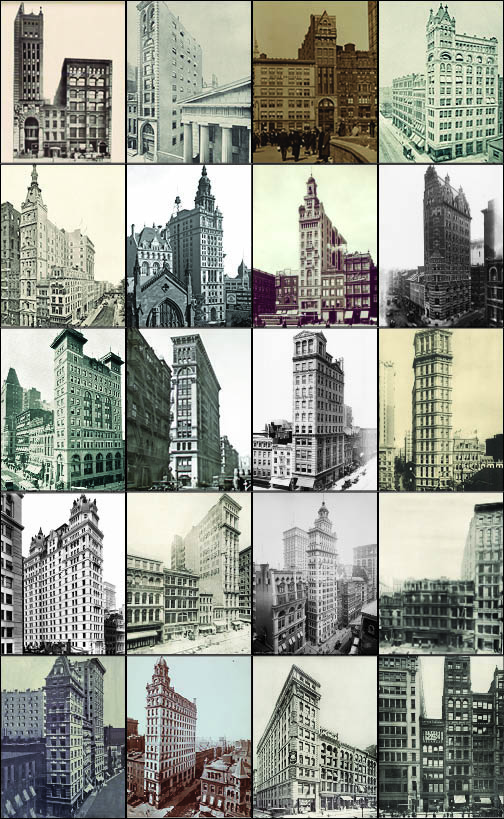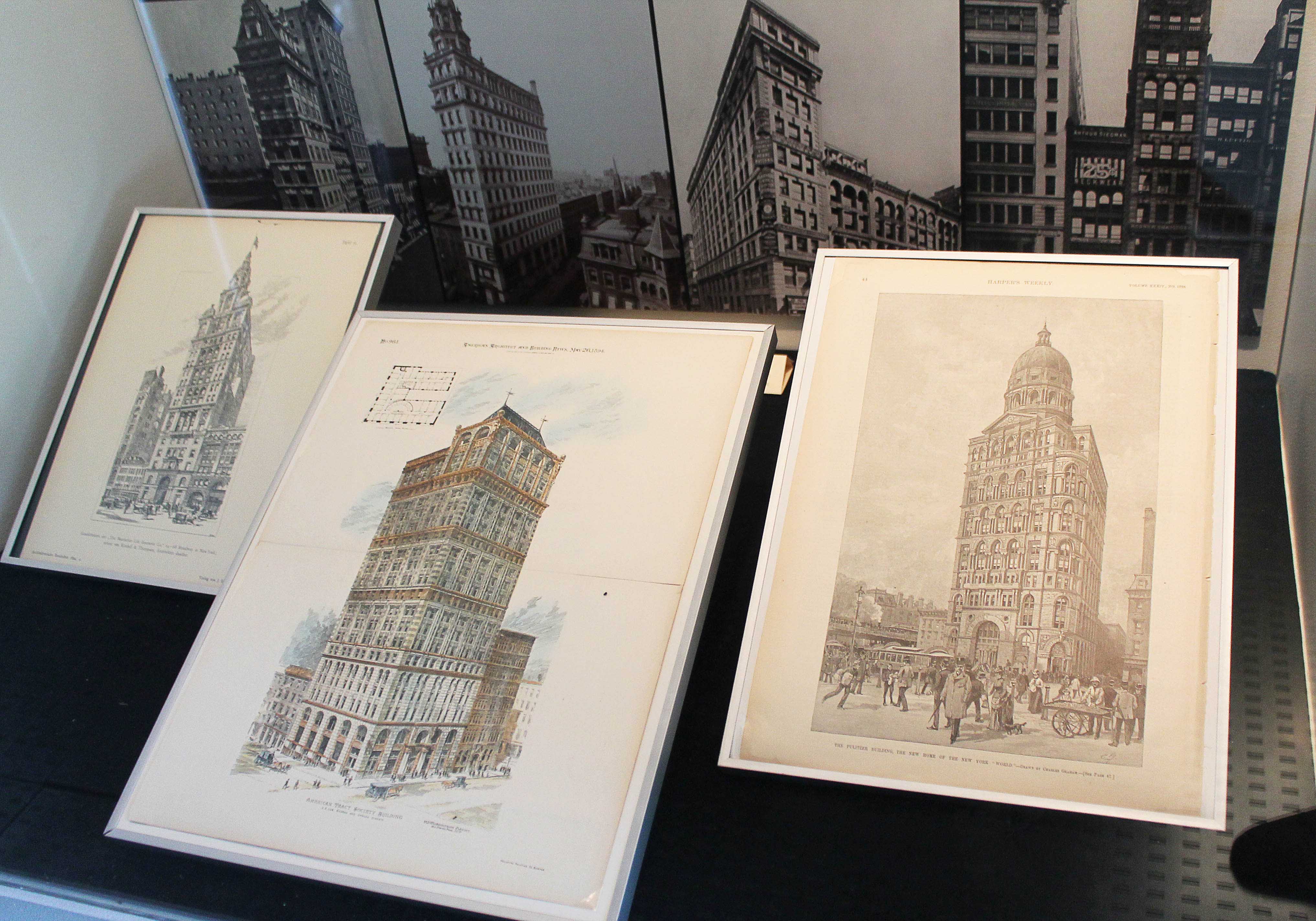The Skyscraper Museum is devoted to the study of high-rise building, past, present, and future. The Museum explores tall buildings as objects of design, products of technology, sites of construction, investments in real estate, and places of work and residence. This site will look better in a browser that supports web standards, but it is accessible to any browser or Internet device.
“SKYSCRAPERS” AND SLENDERNESS
 Click here for imgae credits
Click here for imgae credits
The term “skyscraper” is the romantic, evocative word for structures that engineers generally call tall buildings or high-rises. The mind’s-eye image of a “skyscraper” to most people is a slender building, often with a distinctive verticality, a silhouette against the sky, and, often, an ornamental top. Not many of the 250 buildings in our survey have these characteristics.
Some buildings, such as the ones illustrated on the rear of the case, look like skyscrapers because of their slenderness. In the nineteenth century, many Manhattan buildings rose tall on very narrow lots: 15 of the 20 structures shown here occupied lots with 30 ft. or less frontage. The narrowest, the 1889 Tower Building (top left), was only 21.5 ft. wide, although it stretched 108 ft. deep through the block. At eleven stories and 145 ft., the relatively tiny Tower Building gained the reputation of New York’s “first skyscraper” in some textbooks because it was the first approved by the city’s Department of Buildings to use metal-skeleton construction.
Steel skeletons made slenderness possible and profitable. Replacing thick masonry walls with thin steel columns created much more rentable floor space. Strong I-beams also enabled greater height and quicker construction. Still, the ultimate reason for New York’s many exceedingly slender buildings was the high value of land at prized locations – which is to say, the ability to produce high rents. In an era of unregulated development (except for a height cap on apartment buildings) entrepreneurs created space for companies in both office buildings and lofts, piling on floors as high as they could rent at a profit.
 Installation view, slender case.
Installation view, slender case.
The category of office buildings is seen throughout the exhibition and especially in the Structural Systems cases and on the North Wall History by Examples. Office buildings dominate the 252 structures in our survey with 121 in total. In general, office buildings were taller than the other uses.
